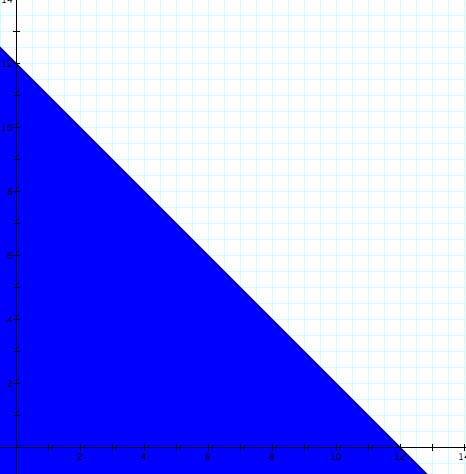2A + 6B > 30

4A + 2B > 16

A + B < 12

Feasible Regions
(continued)
Let's say we have a new kitten, and we want to make sure we are giving it the proper nutrition it needs to grow into a healthy cat.
Here is what the nutritionist recommends:
-at least 30 grams of protein per day
-at least 16 grams of fat per day
-no more than 12 ounces of food per day.
There are two types of food, Type A and Type B. Type A supplies 2 grams of protein and 4 grams of fat. Type B supplies 6 grams of protein and 2 grams of fat.
It would be nice to be able to vary the food day by day, while at the same time meeting these requirements. What will our choices of variation be?
Let's let A = amount of Type A and B = amount of Type B, then our constraints can be stated as follows (y-axis: Type B, x-axis: Type A):
2A + 6B > 30

4A + 2B > 16
A + B < 12
Now that we know what each of the constraints looks like individually, how can we tell what we need to feed the kitten in order for it to get the best nutrition? Well, we need to find the feasible region:

The darkest area above represents the feasible region. Since we can't feed the kitten a negative amount of food, we can ignore negative A values (negative x values). So, any combinations of Type A and B foods that fall within this feasible region will keep our kitten healthy.